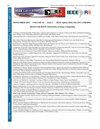Design and Simulation of a Sliding Mode Control for Anesthesia
IF 1.3
4区 工程技术
Q3 COMPUTER SCIENCE, INFORMATION SYSTEMS
引用次数: 0
Abstract
This work presents the automation of the anesthesia infusion process, which allows us to respond quickly, safely and efficiently to possible emergencies that may arise during a surgical intervention. The design of the controller is specific for the infusion of Propofol, which is one of the most used anesthetics. The Higher Order Sliding Mode Control (HOSMC) technique is used, this technique was chosen, since the controller is designed only with the relative degree of the system, its notable characteristic of being insensitive to variations Parametric means that it can have the same efficiency for any patient regardless of the patient's age, sex, weight, height, illness, hydration level, which are important parameters that anesthesiologists consider to calculate the drug dose. Due to the above, its operation is faster compared to that of an anesthesiologist when an accident occurs. HOSMC is a robust controller, since when the patient reaches the desired anesthetic depth, the controller maintains the patient within that level, or within the allowable range even in the presence of surgical perturbations. To simulate the operation of the designed controller, Simulink from Matlab was used, where the controller was programmed.麻醉滑模控制的设计与仿真
这项工作提出了麻醉输注过程的自动化,这使我们能够快速、安全、有效地应对手术干预过程中可能出现的紧急情况。该控制器的设计是专门为注射异丙酚,这是最常用的麻醉剂之一。采用高阶滑模控制(high Order Sliding Mode Control, HOSMC)技术,之所以选择这种技术,是因为控制器的设计只考虑系统的相对程度,它对变化不敏感的显著特点参数化意味着无论患者的年龄、性别、体重、身高、疾病、水合水平如何,它对任何患者都具有相同的效率,这些都是麻醉师计算药物剂量时考虑的重要参数。因此,当发生事故时,它的操作速度比麻醉师要快。HOSMC是一种鲁棒控制器,因为当患者达到所需的麻醉深度时,控制器将患者保持在该水平,或者即使存在手术扰动也保持在允许范围内。为了模拟所设计的控制器的运行,使用Matlab中的Simulink对控制器进行编程。
本文章由计算机程序翻译,如有差异,请以英文原文为准。
求助全文
约1分钟内获得全文
求助全文
来源期刊

IEEE Latin America Transactions
COMPUTER SCIENCE, INFORMATION SYSTEMS-ENGINEERING, ELECTRICAL & ELECTRONIC
CiteScore
3.50
自引率
7.70%
发文量
192
审稿时长
3-8 weeks
期刊介绍:
IEEE Latin America Transactions (IEEE LATAM) is an interdisciplinary journal focused on the dissemination of original and quality research papers / review articles in Spanish and Portuguese of emerging topics in three main areas: Computing, Electric Energy and Electronics. Some of the sub-areas of the journal are, but not limited to: Automatic control, communications, instrumentation, artificial intelligence, power and industrial electronics, fault diagnosis and detection, transportation electrification, internet of things, electrical machines, circuits and systems, biomedicine and biomedical / haptic applications, secure communications, robotics, sensors and actuators, computer networks, smart grids, among others.
 求助内容:
求助内容: 应助结果提醒方式:
应助结果提醒方式:


